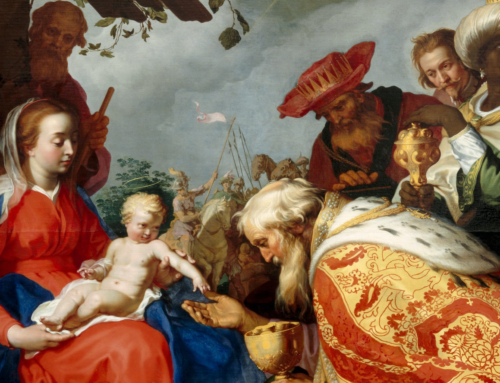As the ancient Jewish sages tell, God created the heavens and earth on the first day of the Hebrew month Nisan. Seven other events in Scripture occur on this day through the ages, all pointing to a particular theme. Their connection is subtle, but see if you can follow the thread. On the first day of Nisan the great flood ended (Gen 8:13), God first gave a commandment to the Israelites through Moses (Exod 12:2-3), the Tabernacle was set up in the wilderness (Exod 40:17), the priesthood ordination rite began for Aaron (Exod 40:2-12), King Hezekiah began to restore the Temple (2 Chr 29:17), the Israelites began to return from the exile (Ezra 7:9), and the Second Temple was inaugurated and purified (Ezek 45:18).
What do these seven events all symbolize? They symbolize restoring creation to the way it was in the beginning, before the Fall, before the defilement and damage of sin. How they symbolize that will be left as a meditation for the reader. Nevertheless, if we follow this narrative thread throughout the Bible we see that events pointing to the restoration of creation happen on the first day of Nisan. So on which day might we expect the Nativity of our Lord Jesus Christ?
Plot twist: the Nativity is not on the first day of Nisan. In fact, December 25th is roughly eight months after. This would daringly seem to suggest that our Lord’s Nativity is not about restoring the world to its original state…
Deeper plot twist: the Nativity is not about going back to the world as it was before sin. The Nativity is about something far greater. The Lord was born to bring us into an entirely new order of existence, a participation in his own divinity, a sharing in the life of God himself! The Eternal Son took on our flesh and was laid in a feeding trough so that we, here and now, could receive his flesh, his soul, his body, and his divinity in the Eucharist. When we receive his sacred body—the very same body that was born of the Blessed Virgin Mary, swaddled in her arms, adored by shepherds, and worshipped by kings—then his life animates our own, and we can truly say with Saint Paul, “it is no longer I who live, but Christ who lives in me” (Gal 2:20). Not only can we now see the face of God, which in former days no man could see and live (Exod 33:20), but the Blessed Virgin has even given it a kiss.
Rejoice! Rejoice until the very earth shakes with joy! For tomorrow, we celebrate the anniversary of the never-ending union of humanity and divinity. Tomorrow, we celebrate the fulfillment of all the hopes of ages past in a measure beyond what man would have ever dared to hope for. Tomorrow, we celebrate the pledge of future glory and infinite joy. Tomorrow, we celebrate the birth of Jesus Christ, our Messiah, our Lord, our God.
✠
Image: Thomas Cole, The Angel Appearing to the Shepherds







